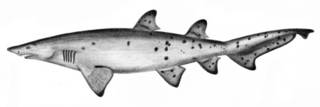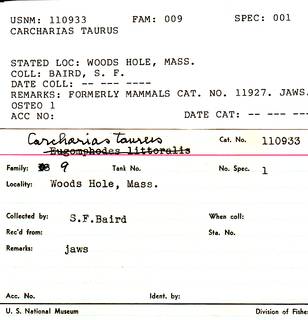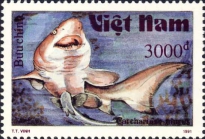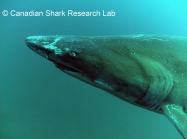RAS taxon details
Carcharias taurus Rafinesque, 1810
105843 (urn:lsid:marinespecies.org:taxname:105843)
accepted
Species
marine, brackish, fresh, terrestrial
Rafinesque, C. S. (1810). Caratteri di alcuni nuovi generi e nuove specie di animali e piante della sicilia, con varie osservazioni sopra i medisimi. <em>Per le stampe di Sanfilippo: Palermo, Italy.</em> Part 1 involves fishes, pp. [i-iv] 3-69 [70 blank], Part 2 with slightly different title, pp. ia-iva + 71-105 [106 blank]). Pls. 1-20., available online at https://www.biodiversitylibrary.org/page/47825964 [details] 
Froese, R. and D. Pauly. Editors. (2021). FishBase. Carcharias taurus Rafinesque, 1810. Accessed through: RAS (Eds.) (2021) Register of Antarctic Species at: http://ras.biodiversity.aq/aphia.php?p=taxdetails&id=105843 on 2025-09-12
RAS (Eds.) (2025). Register of Antarctic Species. Carcharias taurus Rafinesque, 1810. Accessed at: https://ras.biodiversity.aq/aphia.php?p=taxdetails&id=105843 on 2025-09-12
Date
action
by
original description
Rafinesque, C. S. (1810). Caratteri di alcuni nuovi generi e nuove specie di animali e piante della sicilia, con varie osservazioni sopra i medisimi. <em>Per le stampe di Sanfilippo: Palermo, Italy.</em> Part 1 involves fishes, pp. [i-iv] 3-69 [70 blank], Part 2 with slightly different title, pp. ia-iva + 71-105 [106 blank]). Pls. 1-20., available online at https://www.biodiversitylibrary.org/page/47825964 [details] 
context source (Deepsea) Intergovernmental Oceanographic Commission (IOC) of UNESCO. The Ocean Biogeographic Information System (OBIS), available online at http://www.iobis.org/ [details]
context source (RAS) Australian Antarctic Data Centre. , available online at https://data.aad.gov.au/aadc/biodiversity/ [details]
context source (Bermuda) Smith-Vaniz, W. F.; Collette, B. B.; Luckhurst, B. E (1999). Fishes of Bermuda: History, zoogeography, annotated checklist, and identification keys (American Society of Ichthyologists and Herpetologists - Special Publication No.4) . ASIH, 424 pp. [details]
basis of record van der Land, J.; Costello, M.J.; Zavodnik, D.; Santos, R.S.; Porteiro, F.M.; Bailly, N.; Eschmeyer, W.N.; Froese, R. (2001). Pisces, <B><I>in</I></B>: Costello, M.J. <i>et al.</i> (Ed.) (2001). <i>European register of marine species: a check-list of the marine species in Europe and a bibliography of guides to their identification. Collection Patrimoines Naturels,</i> 50: pp. 357-374 (look up in IMIS) [details]
additional source Collette, B. B., ; Klein-MacPhee, G. (2002). Bigelow and Schroeder's Fishes of the Gulf of Maine. <em>Smithsonian Institution Press.</em> 1-748. [details]
additional source Compagno, L.J.V. (1984). FAO Species Catalogue No. 4. Sharks of the world. An annotated and illustrated catalogue of shark species known to date. Part 1. Hexanchiformes to Lamniformes. FAO Fish. Synop. (125) Vol 4, Part 1. 246 pp. FAO, Rome. [details]
additional source McEachran, J. D. (2009). Fishes (Vertebrata: Pisces) of the Gulf of Mexico, Pp. 1223–1316 in: Felder, D.L. and D.K. Camp (eds.), Gulf of Mexico–Origins, Waters, and Biota. Biodiversity. Texas A&M Press, College Station, Texas. [details]
additional source Liu, J.Y. [Ruiyu] (ed.). (2008). Checklist of marine biota of China seas. <em>China Science Press.</em> 1267 pp. (look up in IMIS) [details] Available for editors
additional source Froese, R. & D. Pauly (Editors). (2025). FishBase. World Wide Web electronic publication. version (06/2024)., available online at https://www.fishbase.org [details]
ecology source Looby, A.; Erbe, C.; Bravo, S.; Cox, K.; Davies, H. L.; Di Iorio, L.; Jézéquel, Y.; Juanes, F.; Martin, C. W.; Mooney, T. A.; Radford, C.; Reynolds, L. K.; Rice, A. N.; Riera, A.; Rountree, R.; Spriel, B.; Stanley, J.; Vela, S.; Parsons, M. J. G. (2023). Global inventory of species categorized by known underwater sonifery. <em>Scientific Data.</em> 10(1). (look up in IMIS), available online at https://doi.org/10.1038/s41597-023-02745-4 [details]
context source (Deepsea) Intergovernmental Oceanographic Commission (IOC) of UNESCO. The Ocean Biogeographic Information System (OBIS), available online at http://www.iobis.org/ [details]
context source (RAS) Australian Antarctic Data Centre. , available online at https://data.aad.gov.au/aadc/biodiversity/ [details]
context source (Bermuda) Smith-Vaniz, W. F.; Collette, B. B.; Luckhurst, B. E (1999). Fishes of Bermuda: History, zoogeography, annotated checklist, and identification keys (American Society of Ichthyologists and Herpetologists - Special Publication No.4) . ASIH, 424 pp. [details]
basis of record van der Land, J.; Costello, M.J.; Zavodnik, D.; Santos, R.S.; Porteiro, F.M.; Bailly, N.; Eschmeyer, W.N.; Froese, R. (2001). Pisces, <B><I>in</I></B>: Costello, M.J. <i>et al.</i> (Ed.) (2001). <i>European register of marine species: a check-list of the marine species in Europe and a bibliography of guides to their identification. Collection Patrimoines Naturels,</i> 50: pp. 357-374 (look up in IMIS) [details]
additional source Collette, B. B., ; Klein-MacPhee, G. (2002). Bigelow and Schroeder's Fishes of the Gulf of Maine. <em>Smithsonian Institution Press.</em> 1-748. [details]
additional source Compagno, L.J.V. (1984). FAO Species Catalogue No. 4. Sharks of the world. An annotated and illustrated catalogue of shark species known to date. Part 1. Hexanchiformes to Lamniformes. FAO Fish. Synop. (125) Vol 4, Part 1. 246 pp. FAO, Rome. [details]
additional source McEachran, J. D. (2009). Fishes (Vertebrata: Pisces) of the Gulf of Mexico, Pp. 1223–1316 in: Felder, D.L. and D.K. Camp (eds.), Gulf of Mexico–Origins, Waters, and Biota. Biodiversity. Texas A&M Press, College Station, Texas. [details]
additional source Liu, J.Y. [Ruiyu] (ed.). (2008). Checklist of marine biota of China seas. <em>China Science Press.</em> 1267 pp. (look up in IMIS) [details] Available for editors
additional source Froese, R. & D. Pauly (Editors). (2025). FishBase. World Wide Web electronic publication. version (06/2024)., available online at https://www.fishbase.org [details]
ecology source Looby, A.; Erbe, C.; Bravo, S.; Cox, K.; Davies, H. L.; Di Iorio, L.; Jézéquel, Y.; Juanes, F.; Martin, C. W.; Mooney, T. A.; Radford, C.; Reynolds, L. K.; Rice, A. N.; Riera, A.; Rountree, R.; Spriel, B.; Stanley, J.; Vela, S.; Parsons, M. J. G. (2023). Global inventory of species categorized by known underwater sonifery. <em>Scientific Data.</em> 10(1). (look up in IMIS), available online at https://doi.org/10.1038/s41597-023-02745-4 [details]
 Present
Present  Inaccurate
Inaccurate  Introduced: alien
Introduced: alien  Containing type locality
Containing type locality
To Barcode of Life (115 barcodes)
To Biodiversity Heritage Library (79 publications)
To Biological Information System for Marine Life (BISMaL)
To European Nucleotide Archive, ENA (Carcharias taurus)
To FAO Species fact sheets
To FishBase
To Fishipedia
To GenBank (159 nucleotides; 181 proteins)
To Global Biotic Interactions (GloBI)
To IUCN Red List (Critically Endangered)
To NMNH Extant Collection (Carcharias taurus P02421 illustration)
To NMNH Extant Collection (Carcharias taurus USNM 110933)
To PESI
To Biodiversity Heritage Library (79 publications)
To Biological Information System for Marine Life (BISMaL)
To European Nucleotide Archive, ENA (Carcharias taurus)
To FAO Species fact sheets
To FishBase
To Fishipedia
To GenBank (159 nucleotides; 181 proteins)
To Global Biotic Interactions (GloBI)
To IUCN Red List (Critically Endangered)
To NMNH Extant Collection (Carcharias taurus P02421 illustration)
To NMNH Extant Collection (Carcharias taurus USNM 110933)
To PESI



